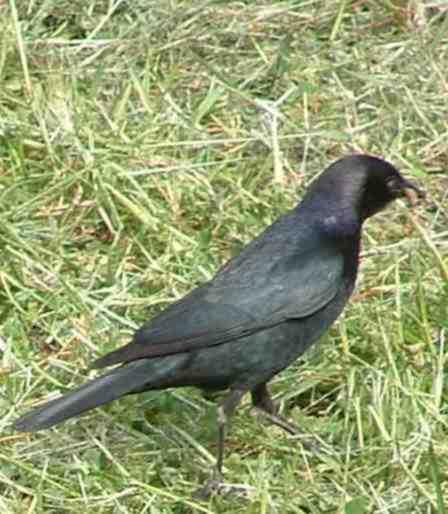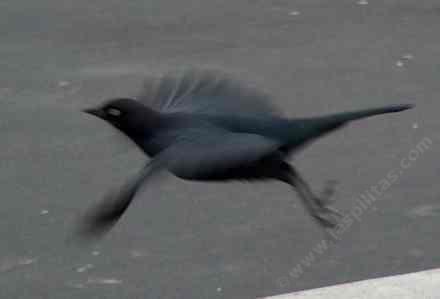Brewer's Blackbird, Euphagus cyanocephalus
Do not mix the Brewer's Blackbird up with the European starling. Although the brewers blackbird can be a pest it is does not compare to the ecological damage done by that other aggressive non-native species. See the western bluebird page. The European starling has a much shorter tail and is more often seen in a tree than on the ground.
How to attract the Brewer's Blackbird to your garden
The Brewer's blackbird is attracted to most common landscapes and is quite happy in over watered lawns. It is one of those rare species that is able to take advantage of urbanization.
Habitat/ Plant community of the Brewer's Blackbird
The Brewer's Blackbird has adapted well to urban habitats. They especially like the large expanses of lawn and parking lots with lots of dropped scraps. They can often be seen perching on power lines in mass. It is quite disconcerting, bringing to mind the Alfred Hitchcock movie The Birds.
Nesting habitat Brewer's Blackbird
The Brewer's blackbird nests in a great variety of habitats. They nest on the ground, in dense foliage, and in trees or shrubs.
Range of the Brewer's Blackbird
The Brewer's blackbird is found throughout California avoiding high elevations only in the winter.
Diet of the Brewer's Blackbird
In spring and summer the Brewer's blackbird feeds on arthropods, including spiders, insects, snails and crustaceans. In the winter and fall they feed mainly on seeds. They prefer to feed on the ground and use mostly moist or wet areas.
Migration of the Brewer's Blackbird
The Brewer's blackbird is not migratory but they do move around searching out new and more plentiful sources of food. They move into the Sierra Nevada range and the Cascades as the weather warms in these areas.





